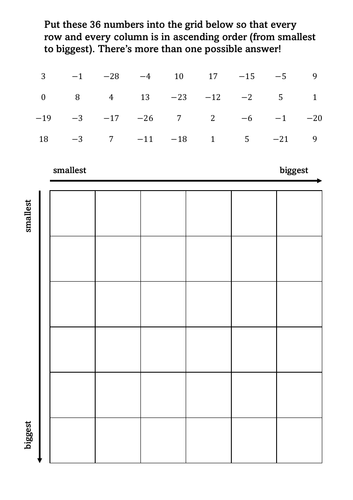


Pupils are given 36 integers (a mixture of positives and negatives) and have to put the numbers into a 6 x 6 grid so that every row and column is in ascending order. This gives them plenty of practice of ordering negative numbers by size.
Solving the puzzle requires experimentation, so when I have used this in my lessons, I’ve put the sheets in plastic wallets and let pupils write on top using a whiteboard pen.
There are many possible solutions; I’ve provided one. However, the smallest number (-28) must always go in the top left corner, and the largest (18) must always go in the bottom right.
Something went wrong, please try again later.
fab resource! Love it!
Thank you for publishing your resource. It has been selected to be featured in <a href="https://www.tes.com/teaching-resources/collections/secondary-maths/"> a new secondary maths collection</a>.
Report this resourceto let us know if it violates our terms and conditions.
Our customer service team will review your report and will be in touch.